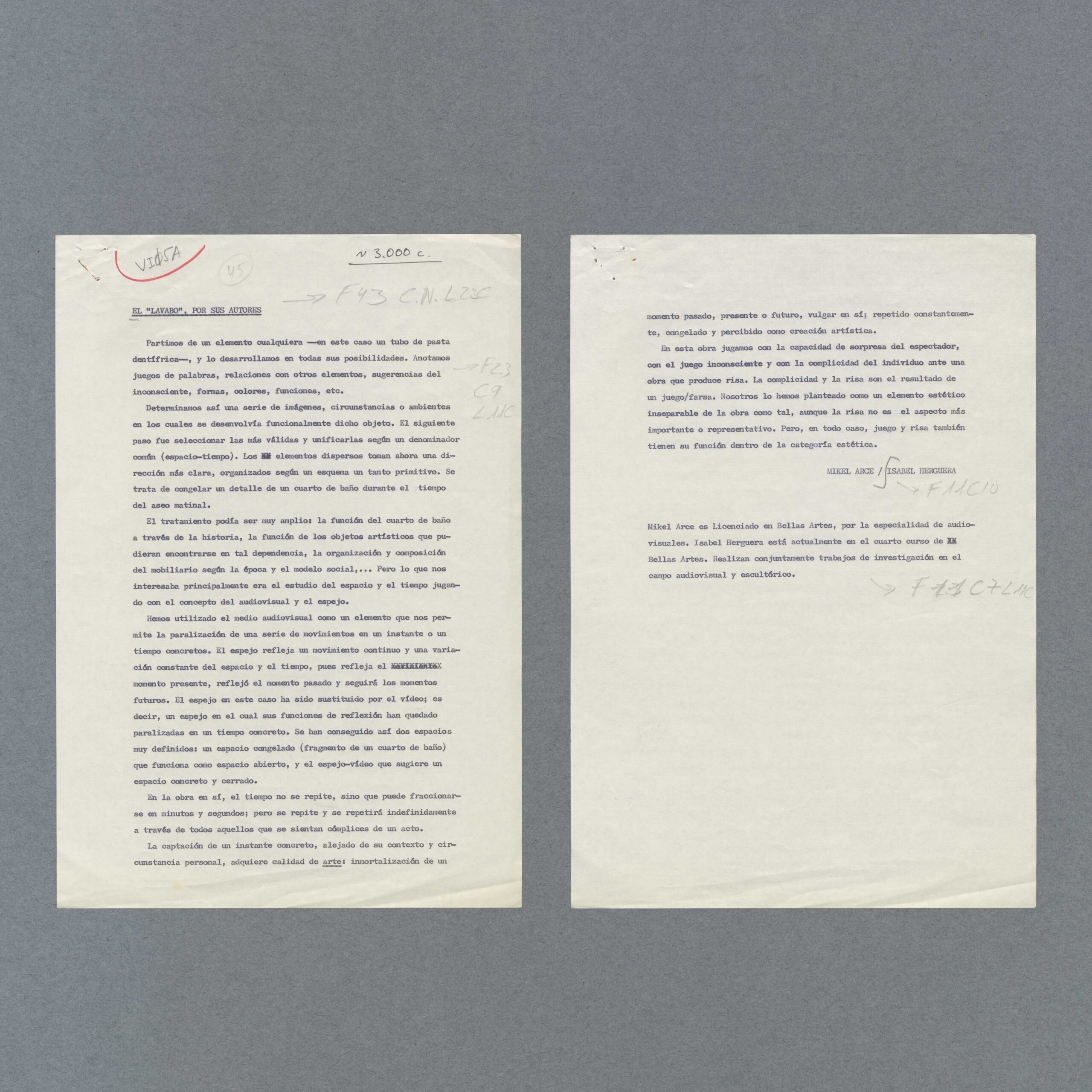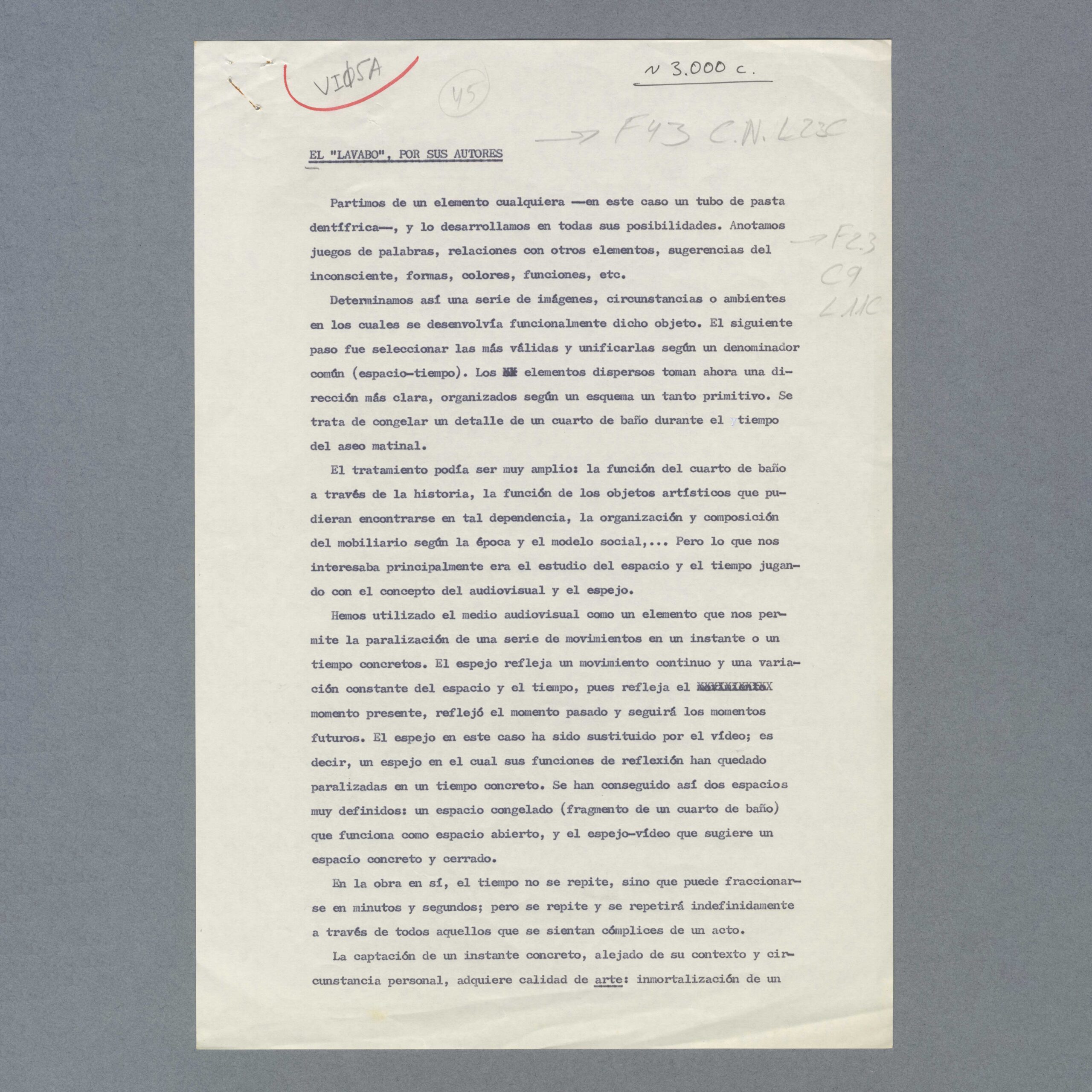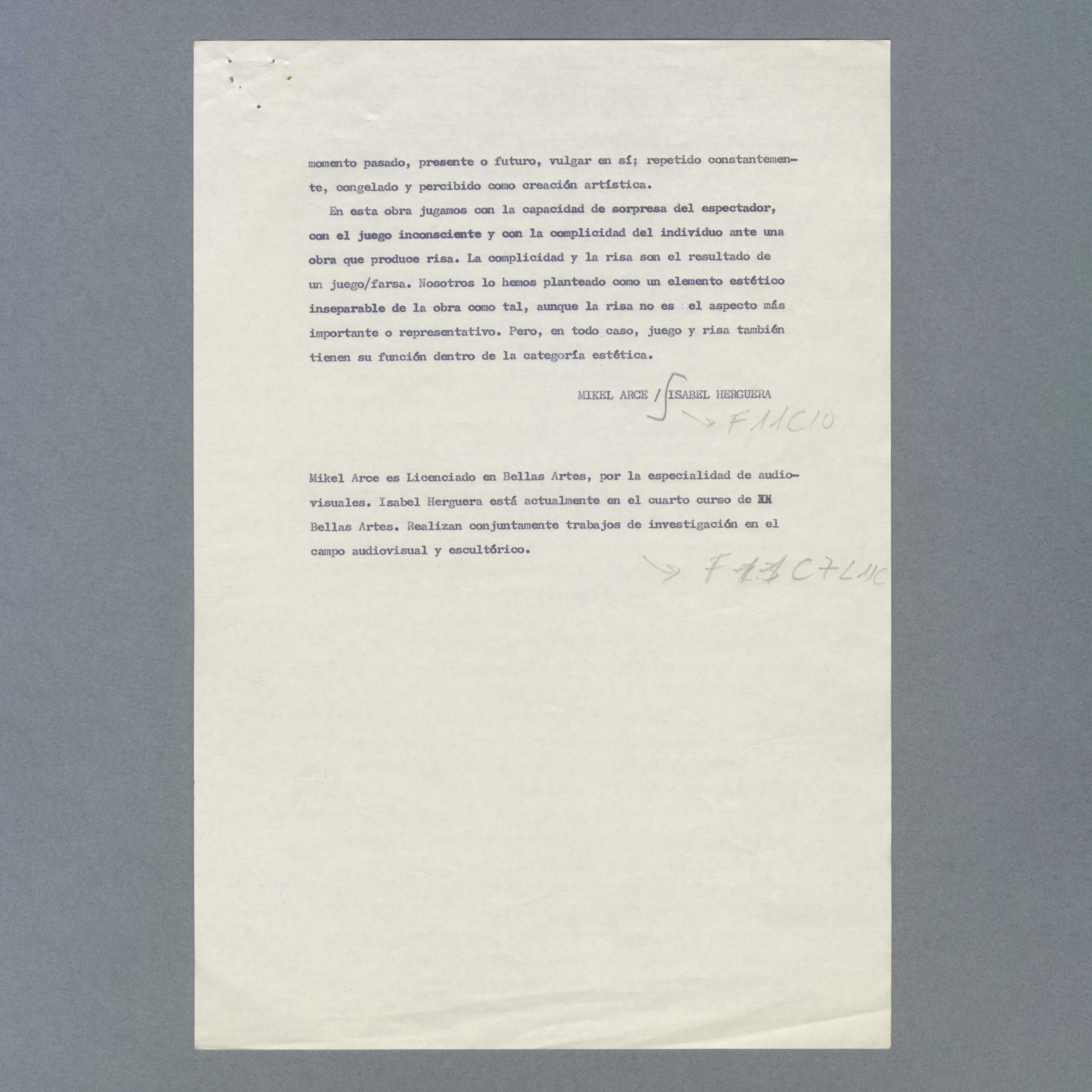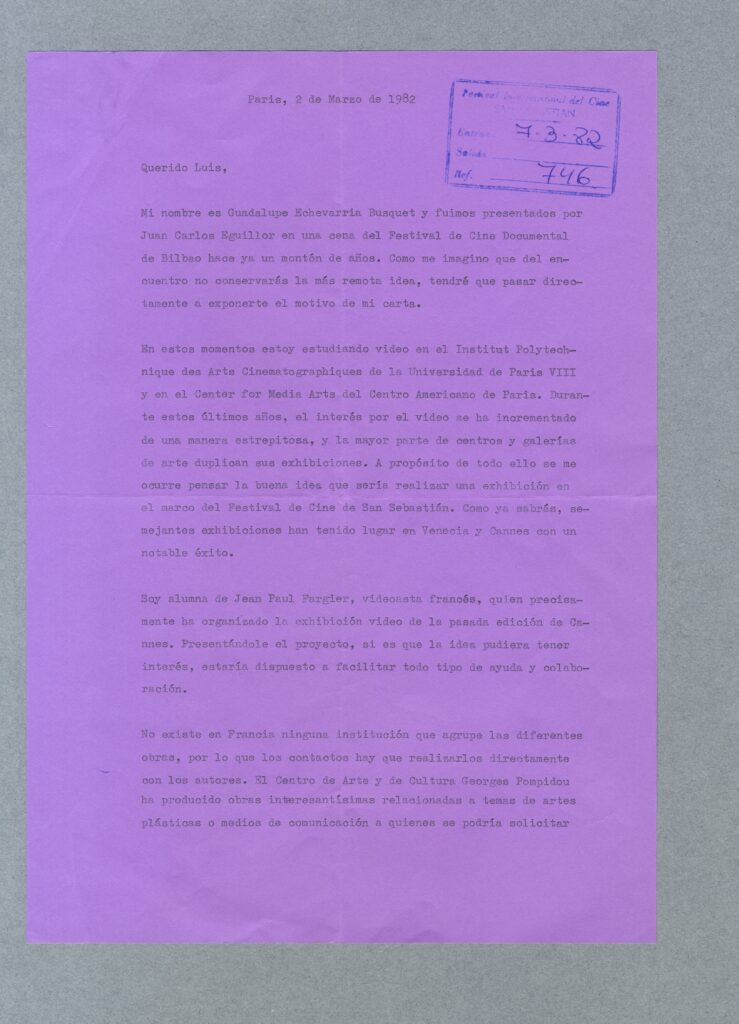Digital collections
Digital collections
Description of the piece "Lavabo" by Isabel Herguera and Mikel Arce Sagarduy
October 2023
In June 1983, a young Isabel Herguera, at that time a fourth-year student at the Faculty of Fine Arts in Bilbao, submitted a registration form together with her colleague Mikel Arce for their video-installation Lavabo so that they could officially take part in the Video Festival, founded a year before this by Guadalupe Echevarria as part of the San Sebastian Film Festival. Along with the standard registration materials (technical specifications, curriculums, biographies) the archive has kept a detailed description, written by the artists themselves, of this pioneering piece of work.
Two months earlier as grant-holders, Herguera and Arce had exhibited Lavabo, that was also called their video-sculpture, at Arteder, the Contemporary Art Fair that had been held since 1981 in Bilbao as a meeting place for artists to present the latest innovations in painting, sculpture, ceramics or photography. Arteder 83 was a key year in several ways. On the one hand, the organisers included the video for the very first time in their catalogue of works of art. On the other hand, the holding of the fair – that at the same time was a market – provided the setting for the official formation of the Euskal Artisten Elkartea [Association of Basque Artists], with the aim of acting as a “pressure group” in the field of art and culture.
As well as Lavabo, which is considered to be the first video-installation to be made in the Basque Country and one of the first in Spain, the team led by Guadalupe Echevarria retrieved another Basque piece shot on video from that vibrant artistic showcase to be included, together with another 38 films, in the International Competition of the Video Festival. This was Bilbao la muerte by Juan Carlos Eguillor, described by its author, in his first incursion into the medium, as an omen for the historic flood that occurred in August in that same year in Bilbao.
Just like Herguera, Arce was also something of a pioneer: a year before they created their joint work, he had taken part as a monitor in some Introduction to Audiovisual Media courses aimed at teachers at Ikastolas, run with the support of the Basque Government, in what can be considered to be the first step in the academic sphere towards the literacy of a new language.
Full description sheet
Video festival collection
Description of the piece “Lavabo” by Isabel Herguera and Mikel Arce Sagarduy
Identity statement area
ID: 39798
Catalogue number: FV1982-1984.0170
Location: M19.B02.C02
Classification scheme: 4.1.2. Film registration
Title: Description of the piece “Lavabo” by Isabel Herguera and Mikel Arce Sagarduy
Date of creation: 1983-06
Level of description: Simple documentary unit
Extent and medium of the unit of description: 2 documents
Context area
Productor: Isabel Herguera, Mikel Arce Sagarduy
Área de control
Conservación: Anna Ferrer, Andrea Sánchez
Catalogación: Edurne Arocena (Ereiten)
Other documents of the month

[+]
Program for the 11th edition of the Festival International de Films de Femmes de Créteil et du Val de Marne (1989) San Sebastian Festival Archive. [+]
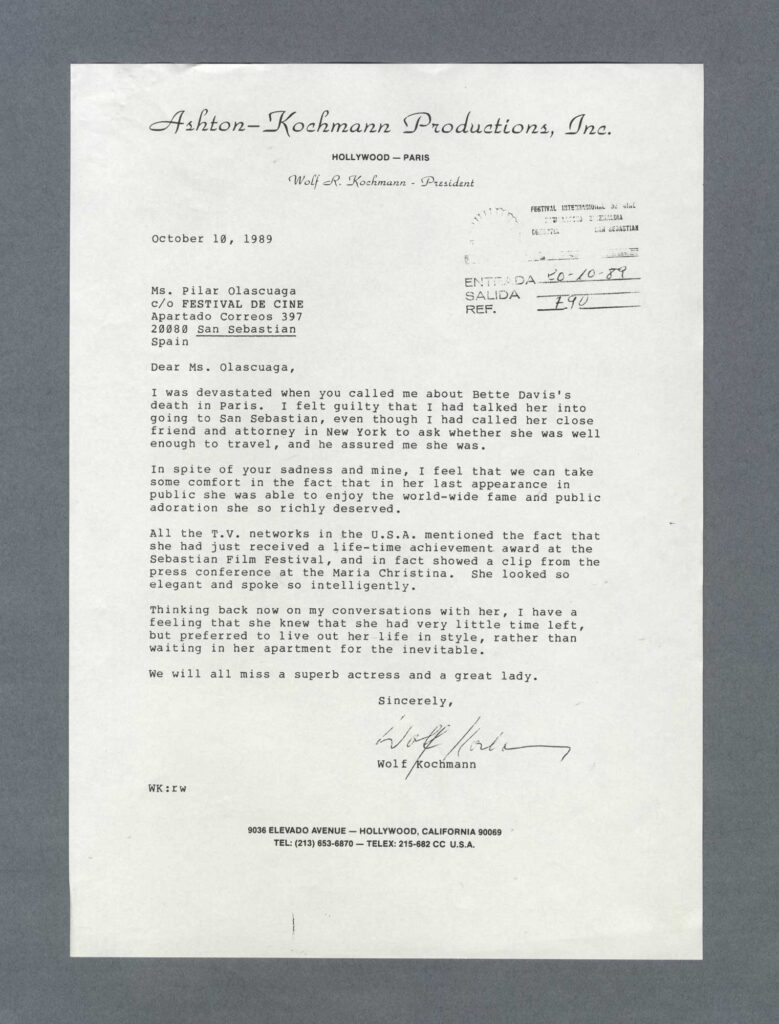
[+]
Letter from Wolf Kochmann to Pilar Olascoaga on the death of Bette Davis (1989) San Sebastian Festival Archive. [+]

[+]
Letter from Luis Buñuel to the Mayor of San Sebastián Antonio Vega de Seoane (1960) San Sebastian Festival Archive. [+]
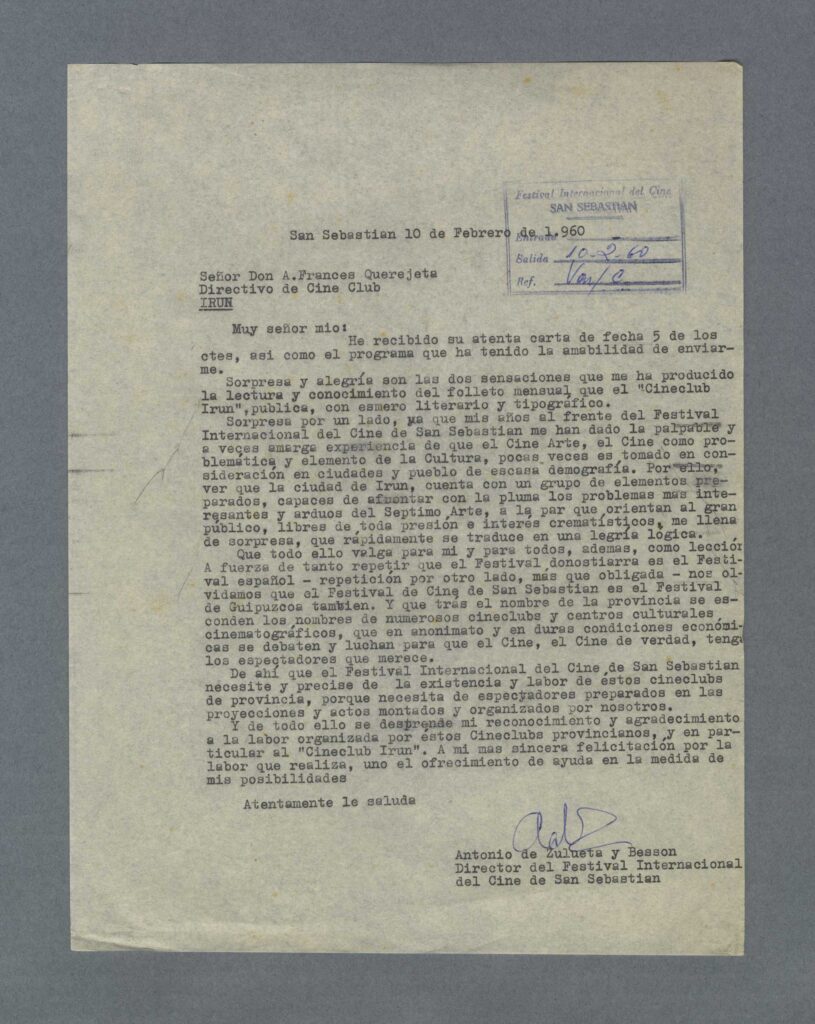
[+]
Letter sent by Antonio de Zulueta y Besson to the Cineclub Irún accepting to collaborate with them (1960) San Sebastian Festival Archive. [+]
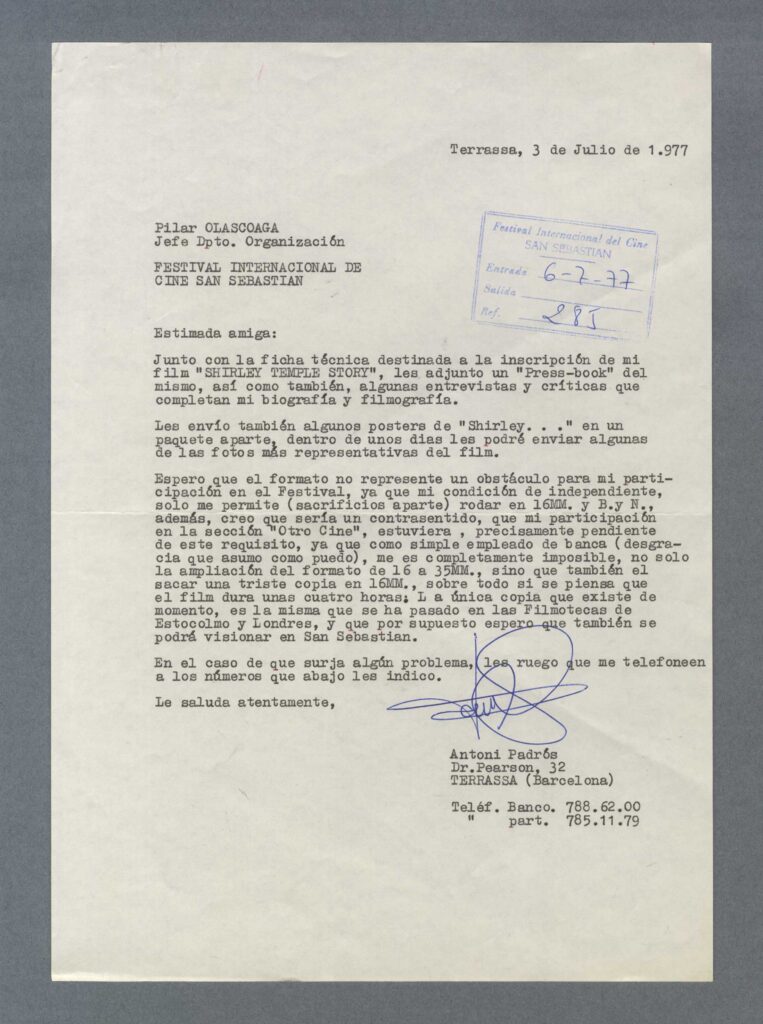
[+]
Letter from underground filmmaker Antoni Padrós to Pilar Olascoaga (1977) San Sebastian Festival Archive. [+]
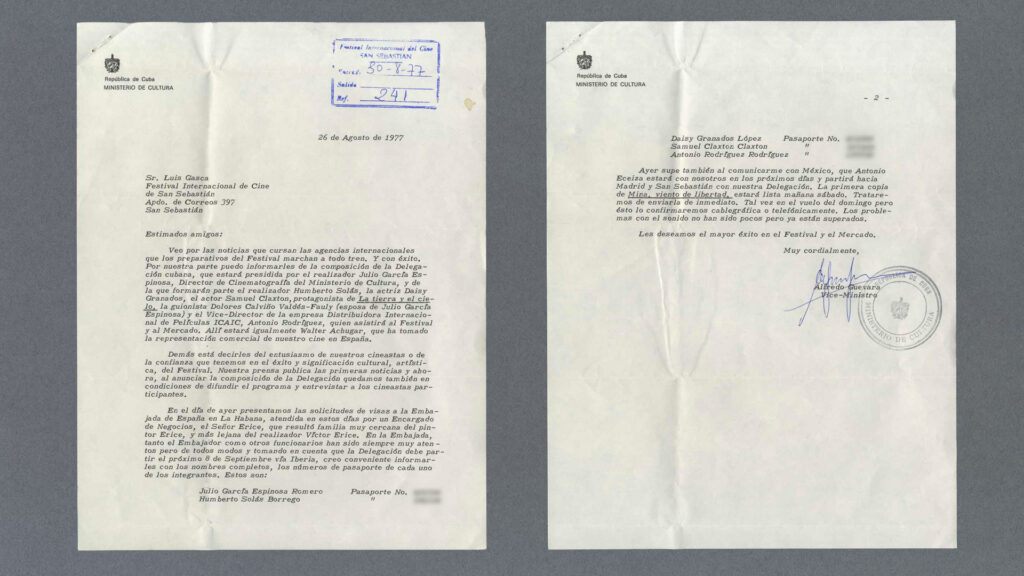
[+]
Letter from Alfredo Guevara, Vice Minister of the Ministry of Culture of Cuba and founder of ICAIC, to Luis Gasca, Secretary General of the Festival (1977) San Sebastian Festival Archive [+]

[+]
HLetter sent by VALIE EXPORT to Festival Director Miguel de Echarri (1977) San Sebastian Festival Archive [+]
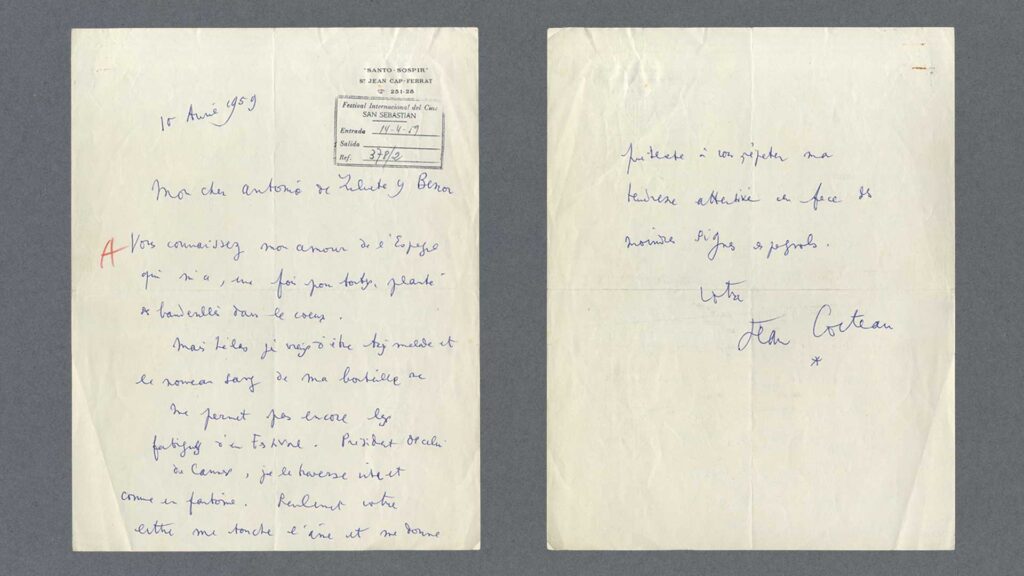
[+]
Handwritten letter from Jean Cocteau to Antonio de Zulueta y Besson (1959) San Sebastian Festival Archive [+]

[+]
ACommunication with the director Pierre Clémenti (1979-1980) San Sebastian Festival Archive. [+]
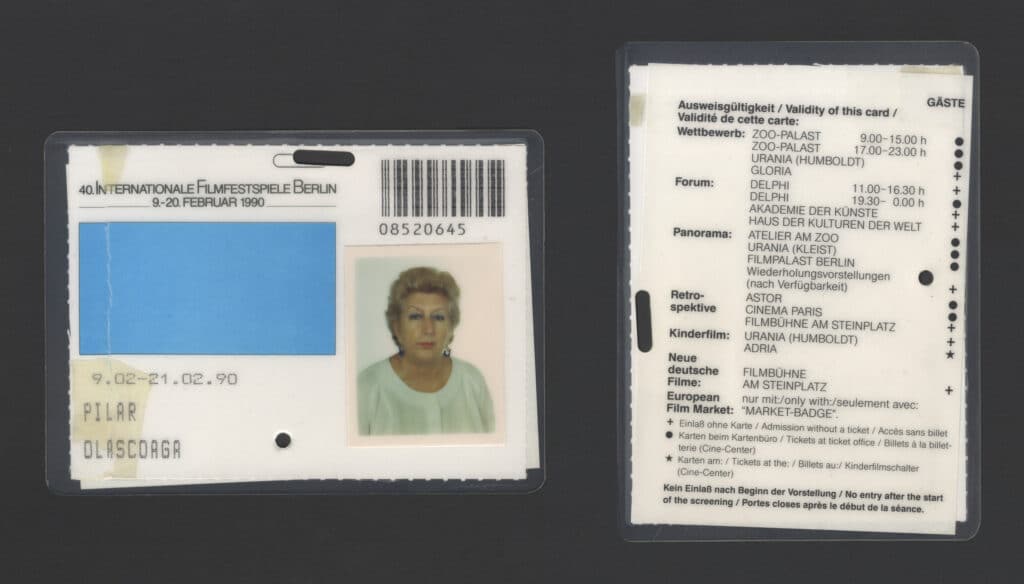
[+]
Accreditation of Pilar Olascoaga to attend the 40th edition of the Berlinale (1990) San Sebastian Festival Archive. [+]
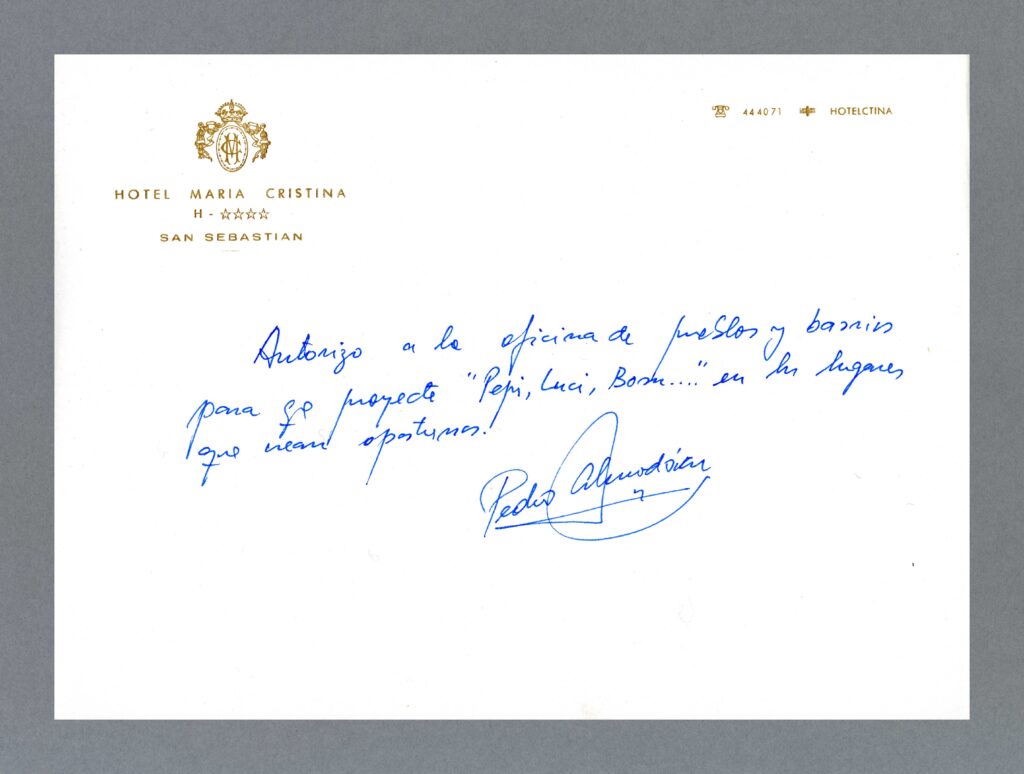
[+]
Handwritten note by Pedro Almodóvar (1980) San Sebastian International Film Festival Archive [+]
